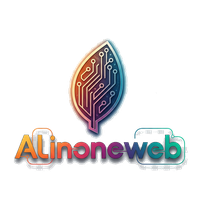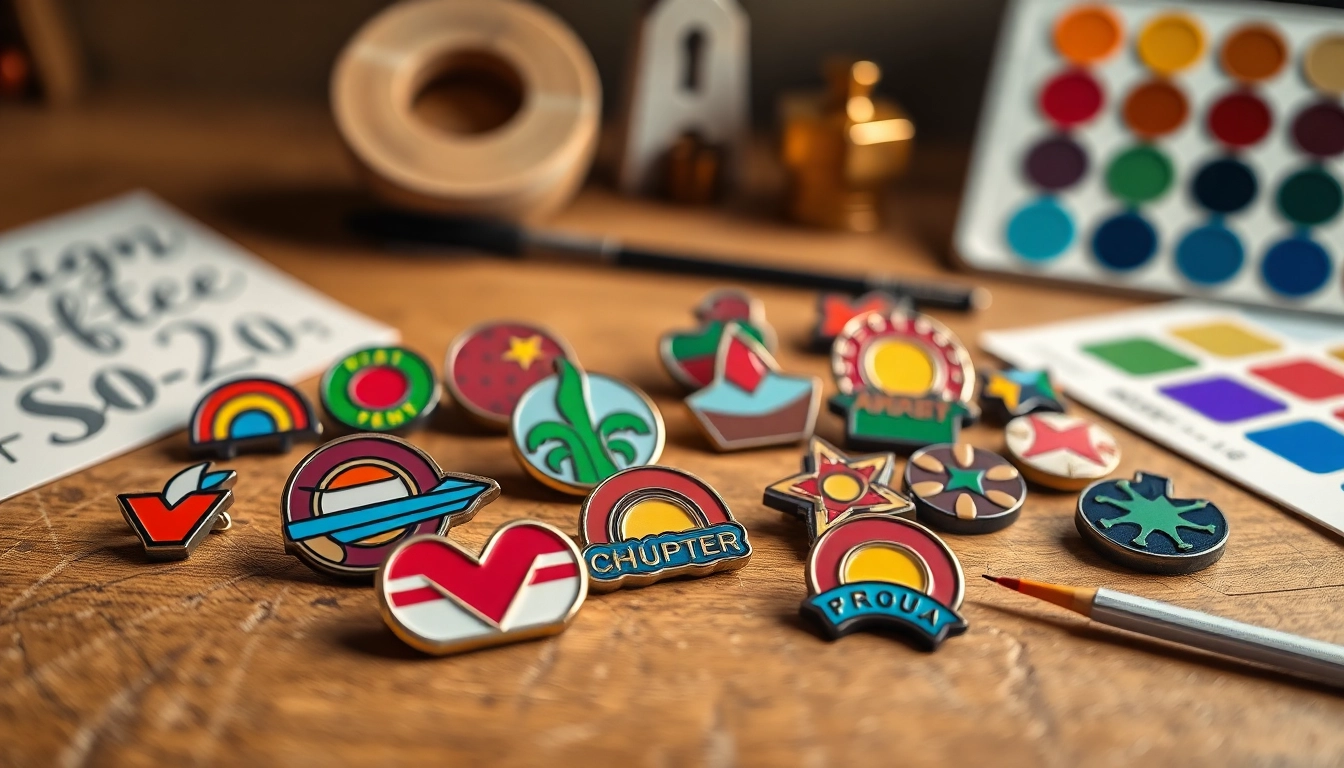Understanding Custom Pins
What are Custom Pins?
Custom pins are personalized, decorative metal attachments often worn on clothing, hats, bags, and other fabric items. They can serve various purposes, including fashion statements, expressions of individuality, or as branding tools for businesses and organizations. Generally made of durable materials such as metal, they can be adorned with virtually any design, logo, or text, making them a versatile tool for both expression and promotion.
Organizations often use custom pins to build brand recognition, as well as to reward employees, engage with communities, and raise awareness for causes. Their ability to foster a sense of belonging and pride makes them popular among clubs, teams, and events.
Types of Custom Pins Available
There are several types of custom pins available, each serving different aesthetic preferences and functional needs. The most popular types include:
- Soft Enamel Pins: These pins feature recessed areas filled with soft enamel that can be dyed in various colors. The raised metal outlines give these pins a distinct texture, making them a favorite among collectors.
- Hard Enamel Pins: Hard enamel pins are polished to a smooth finish, resulting in a shiny and colorful appearance. They are more durable and often used for higher-end custom pieces or official branding.
- Die-Strike Pins: This method involves stamping the design into the metal, resulting in an intricate texture. These pins are often plated with various finishes like gold, silver, or nickel.
- Offset Printed Pins: For highly detailed designs or photographs, offset printing is an excellent option. This method allows for vivid colors and intricate detailing that may not be possible with traditional methods.
Benefits of Using Custom Pins
Custom pins offer numerous benefits across various sectors, including:
- Promotional Tool: Custom pins can be handed out at events, trade shows, or as part of marketing campaigns, making them effective conversation starters.
- Employee Recognition: Companies can use custom pins as awards or tokens of appreciation for employees, fostering loyalty and motivation.
- Community Engagement: Nonprofits and community organizations can distribute pins to promote campaigns and engage supporters.
- Fashion Statement: Pins can be a fun way for individuals to express their personal style or show support for certain causes or movements.
Designing Your Custom Pins
Creative Design Tips for Custom Pins
Designing custom pins requires careful consideration to ensure they are not only visually appealing but also functional and representative of the intended message. Here are some tips to guide you:
- Reflect Brand Identity: The design should align with the colors, logos, and overall branding of your organization or event. Consistency strengthens the brand image.
- Simplicity is Key: While creativity is encouraged, keeping the design simple can enhance recognition. Overly complicated designs may lose clarity when scaled down to pin size.
- Choose Appropriate Colors: Select colors that stand out but also represent your brand or ideology. Consider color psychology; different colors evoke different feelings.
- Incorporate Unique Elements: Adding a distinctive feature, like a custom shape or layered design, can differentiate your pins from competitors and attract attention.
Choosing Materials for Custom Pins
The material choice can profoundly influence the look, feel, and durability of custom pins. Here are common materials and their unique characteristics:
- Metal: Typically, most custom pins are made from iron, brass, or zinc alloy. Each metal offers different aesthetics and durability.
- Enamel: Used in soft and hard enamel pins, this material allows for vibrant color representation and a smooth finish.
- Acrylic: An alternative for low-cost, vibrant options, often used for more whimsical designs.
- Wood: An eco-friendly choice, wooden pins offer a natural look and are appealing to specific consumer demographics.
Working with Designers for Custom Pins
Collaborating with experienced designers can ensure that the vision for your custom pins is brought to life effectively. Here’s how to make the most of this collaboration:
- Find Professionals: Look for designers who specialize in pin design or have experience in custom merchandise. Their portfolio will help you gauge their style and skills.
- Communicate Clearly: Share your vision, brand guidelines, and target audience to ensure the design aligns with your expectations.
- Request Prototypes: Many designers will create prototypes or mock-ups before producing the final product. This step is crucial for making adjustments.
- Provide Feedback: Don’t hesitate to provide constructive feedback during the design phase to ensure the end product aligns with your vision.
Ordering Custom Pins
Where to Order Custom Pins
When you’re ready to order custom pins, various online platforms specialize in pin manufacturing. It’s essential to choose a vendor known for quality and reliability. Look for vendors that offer:
- Customization Options: Flexibility in design modifications ensures your pins meet specific requirements.
- Quality Materials: A reputable manufacturer will use high-quality materials, ensuring durability and an attractive finish.
- Customer Reviews: Explore customer testimonials and reviews to gauge the manufacturer’s reliability and service.
Understanding Minimum Orders for Custom Pins
Minimum order quantities (MOQs) can vary significantly between suppliers. Here are key points to consider:
- Typical MOQs: Many manufacturers may have a minimum requirement of 50–100 pins. Understanding the MOQ is crucial for budgeting.
- Bulk Pricing: The cost per pin often decreases as quantities increase, which can be beneficial if you need a large number of pins for an event.
- Flexibility: Some companies offer no-minimum options, though prices may be higher. If you only need a few pins, this could be the preferred choice.
Production and Delivery Times for Custom Pins
Understanding the timeline from order to delivery is vital to avoid last-minute surprises. General timelines include:
- Production Time: Depending on the complexity of the design, production can take anywhere from 1 to 4 weeks. Always ask the manufacturer for an estimated timeframe.
- Shipping Times: Factor in additional time for shipping, which can vary based on your location and the shipping method selected.
- Rush Orders: Some manufacturers offer rush services for an additional fee, which can significantly shorten the delivery time.
Marketing and Utilizing Custom Pins
Using Custom Pins for Branding
Custom pins can play a significant role in enhancing branding efforts. They can serve as a potent marketing tool due to their visibility and inherent collectibility. Here are some effective strategies:
- Brand Ambassadors: Distributing pins to employees or loyal customers can turn them into brand ambassadors. When they wear the pins publicly, they advertise your brand.
- Social Media Campaigns: Encourage individuals to share photos of their custom pins on social media, using a dedicated hashtag to boost visibility.
- Incorporate into Merchandise: Consider using pins as part of merchandise offerings for events or online sales, enhancing purchase appeal.
Custom Pins as Gifts and Incentives
Custom pins can also be used as gifts or incentives to encourage desired behaviors. Their sentimental and collectible nature makes them perfect for:
- Awards and Recognition: Handing out pins as awards can instill pride and motivation among recipients.
- Membership Tokens: Organizations can give pins to members as a symbol of belonging, which can foster community and loyalty.
- Event Giveaways: Using custom pins as giveaways at events can enhance attendee experience and brand recall.
Showcasing Custom Pins at Events
Custom pins can be showcased effectively at various events, including trade shows, corporate events, and community gatherings. Consider these strategies:
- Pin Trading: Encourage pin trading at events, creating excitement and engagement among attendees.
- Display Boards: Use display boards to showcase the various designs available—this can attract attention and generate interest.
- Interactive Booths: Create an interactive booth where people can customize their pins on the spot, providing a unique experience while enhancing promotional efforts.
Performance Tracking for Custom Pins
Measuring Success with Custom Pins
Tracking the success of custom pins involves evaluating their impact on brand visibility and engagement. Measure success through:
- Sales Metrics: Analyze any sales boost resulting from pin campaigns, tracking changes in revenue before and after the distribution of pins.
- Social Media Engagement: Monitor shares, likes, and comments related to pins on social platforms to gauge social impact and engagement levels.
- Feedback Surveys: Consider sending surveys post-event to gather attendee feedback about the pins and any associated campaigns.
Feedback and Iteration on Custom Pins
Feedback collection is crucial for optimizing future pin campaigns. Here’s how to implement effective feedback mechanisms:
- Direct Feedback: Engage directly with users to elicit feedback on the design and quality of pins.
- Community Discussion: Create forums or social media groups where collectors can discuss their preferences and experiences.
- Iterate Designs: Use feedback to make iterative changes to designs and offerings, ensuring they remain fresh and relevant.
Case Studies of Effective Use of Custom Pins
Analyzing case studies where custom pins have succeeded can provide valuable insights and inspiration:
- Event Promotions: Organizations that include exclusive pins as part of their event merchandise often experience higher engagement and post-event sales.
- Community Engagement: Nonprofits that distribute pins as awareness tools see more active participation and donations, indicating a strong connection between the pins and their cause.
- Corporate Recognition Programs: Companies that incorporate pins into employee recognition programs report higher morale and retention rates.

